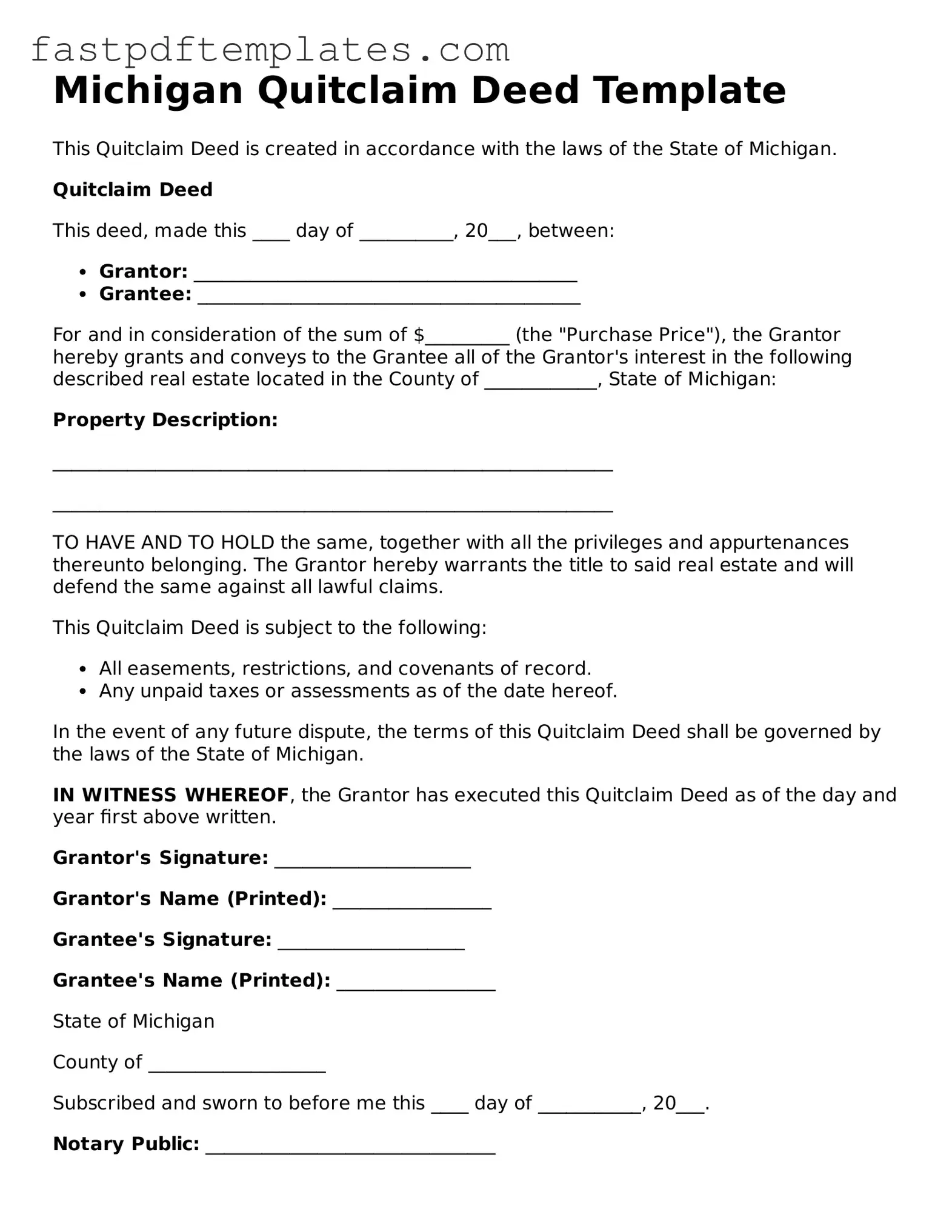Michigan Quitclaim Deed Template
This Quitclaim Deed is created in accordance with the laws of the State of Michigan.
Quitclaim Deed
This deed, made this ____ day of __________, 20___, between:
- Grantor: _________________________________________
- Grantee: _________________________________________
For and in consideration of the sum of $_________ (the "Purchase Price"), the Grantor hereby grants and conveys to the Grantee all of the Grantor's interest in the following described real estate located in the County of ____________, State of Michigan:
Property Description:
____________________________________________________________
____________________________________________________________
TO HAVE AND TO HOLD the same, together with all the privileges and appurtenances thereunto belonging. The Grantor hereby warrants the title to said real estate and will defend the same against all lawful claims.
This Quitclaim Deed is subject to the following:
- All easements, restrictions, and covenants of record.
- Any unpaid taxes or assessments as of the date hereof.
In the event of any future dispute, the terms of this Quitclaim Deed shall be governed by the laws of the State of Michigan.
IN WITNESS WHEREOF, the Grantor has executed this Quitclaim Deed as of the day and year first above written.
Grantor's Signature: _____________________
Grantor's Name (Printed): _________________
Grantee's Signature: ____________________
Grantee's Name (Printed): _________________
State of Michigan
County of ___________________
Subscribed and sworn to before me this ____ day of ___________, 20___.
Notary Public: _______________________________
My Commission Expires: ___________________
